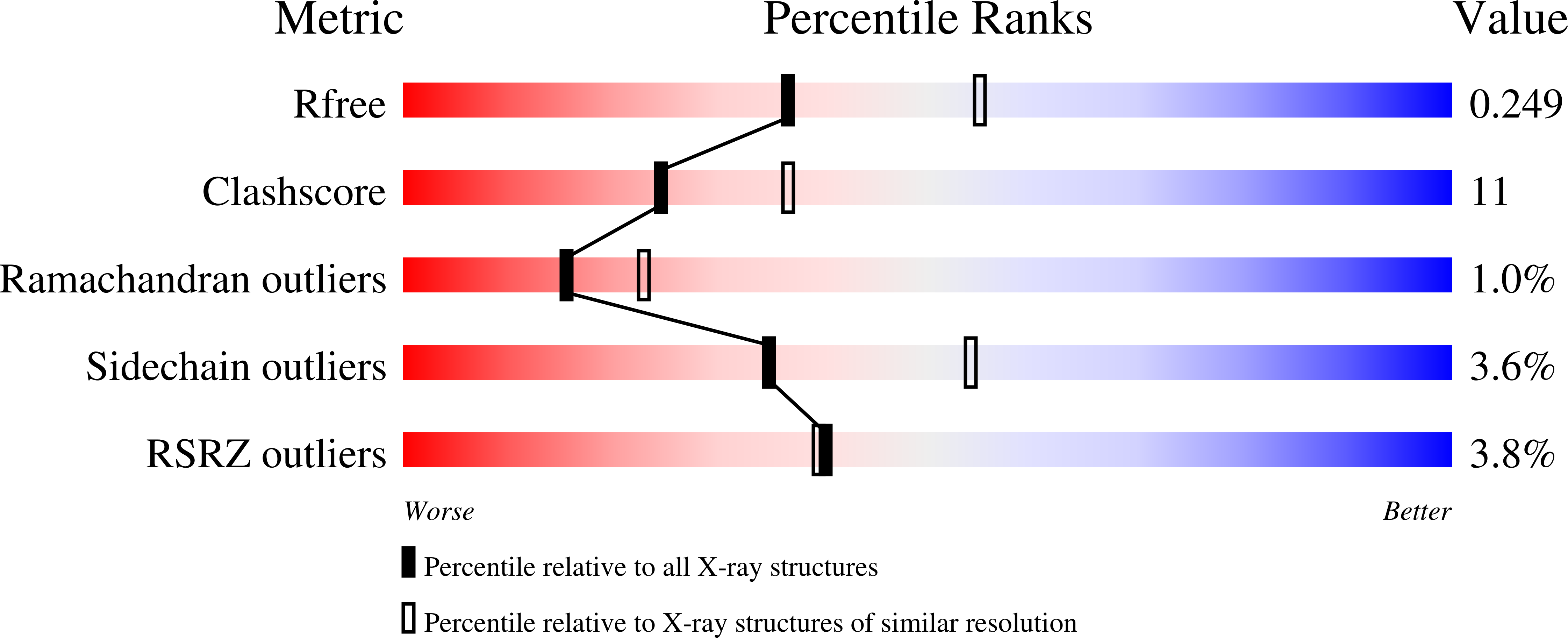Structures of three diphtheria toxin repressor (DtxR) variants with decreased repressor activity.
Pohl, E., Goranson-Siekierke, J., Choi, M.K., Roosild, T., Holmes, R.K., Hol, W.G.(2001) Acta Crystallogr D Biol Crystallogr 57: 619-627
- PubMed: 11320302
- DOI: https://doi.org/10.1107/s090744490100230x
- Primary Citation of Related Structures:
1FWZ, 1G3S, 1G3T, 1G3W, 1G3Y - PubMed Abstract:
The diphtheria toxin repressor (DtxR) from Corynebacterium diphtheriae regulates the expression of the gene on corynebacteriophages that encodes diphtheria toxin (DT). Other genes regulated by DtxR include those that encode proteins involved in siderophore-mediated iron uptake. DtxR requires activation by divalent metals and holo-DtxR is a dimeric regulator with two distinct metal-binding sites per three-domain monomer. At site 1, three side chains and a sulfate or phosphate anion are involved in metal coordination. In the DtxR-DNA complex this anion is replaced by the side chain of Glu170 provided by the third domain of the repressor. At site 2 the metal ion is coordinated exclusively by constituents of the polypeptide chain. In this paper, five crystal structures of three DtxR variants focusing on residues Glu20, Arg80 and Cys102 are reported. The resolution of these structures ranges from 2.3 to 2.8 A. The side chain of Glu20 provided by the DNA-binding domain forms a salt bridge to Arg80, which in turn interacts with the anion. Replacing either of the salt-bridge partners with an alanine reduces repressor activity substantially and it has been inferred that the salt bridge could possibly control the wedge angle between the DNA-binding domain and the dimerization domain, thereby modulating repressor activity. Cys102 is a key residue of metal site 2 and its substitution into a serine abolishes repressor activity. The crystal structures of Zn-Glu20Ala-DtxR, Zn-Arg80Ala-DtxR, Cd-Cys102Ser-DtxR and apo-Cys102Ser-DtxR in two related space groups reveal that none of these substitutions leads to dramatic rearrangements of the DtxR fold. However, the five crystal structures presented here show significant local changes and a considerable degree of flexibility of the DNA-binding domain with respect to the dimerization domain. Furthermore, all five structures deviate significantly from the structure in the DtxR-DNA complex with respect to overall domain orientation. These results confirm the importance of the hinge motion for repressor activity. Since the third domain has often been invisible in previous crystal structures of DtxR, it is also noteworthy that the SH3-like domain could be traced in four of the five crystal structures.
Organizational Affiliation:
Department of Biochemistry, University of Washington, Seattle, WA 98195, USA. ehmke@embl-hamburg.de
















